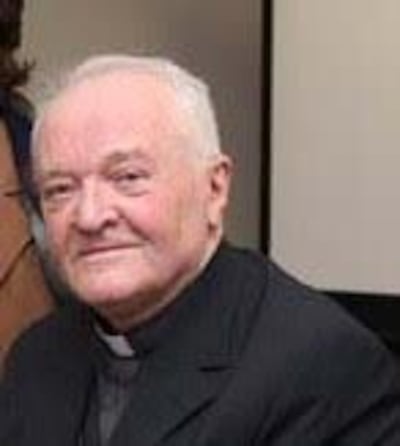Commentary on War of Independence events has made little reference to the stance of the Catholic Church then. There remains an impression that it was, at best, ambivalent and, at worst, hostile to efforts to win independence for our country.
A closer look at church archives suggests otherwise. In 1917, Archbishop Thomas Gilmartin of Tuam wrote: "How can a priest or bishop denounce crime, without denouncing the real authors of the crime? Everybody now admits that Ireland has been grossly misruled. Misrule always leads to violations of public order. Is it the duty of bishops to denounce those violations and say nothing about the government?"
Dr Gilmartin's clergy regularly denounced IRA excesses but five of his younger priests were arrested for supporting 'the movement'
In 1918, with the other Irish bishops, he denounced proposed conscription in Ireland. On April 9th they said: “With all the responsibility that attaches to our office, we feel bound to warn the government against acting upon a policy so disastrous to the public interest and to all order, public or private.”

Archbishop Edward Byrne of Dublin told a priest colleague of his "astonishment at the ardour and almost revolutionary sentiment of some of the bishops who spoke that day".
Public meetings in parishes administered a pledge against conscription with collections at church gates supporting resistance. The combined opposition of the bishops, the Irish Parliamentary Party, Sinn Féin and the trade unions meant the government abandoned its conscription policy. The bishops’ part, though now forgotten, was crucial to the success of that campaign.
Dr Gilmartin's clergy regularly denounced IRA excesses but five of his younger priests were arrested for supporting "the movement". Throughout 1920, the Archbishop had his priests submit reports to him about atrocities by crown forces, which he sent to Gen Nevil Macready, general officer commanding-in-chief of British forces in Ireland.
Two RIC men were shot in an IRA ambush on July 19th, 1920, near Tuam, which Dr Gilmartin described as “a dastardly murder”.
“The Sack of Tuam”, with widespread looting by crown forces, immediately followed. Dr Gilmartin protested to Macready and added: “If no reprisals had taken place, there would have been a great wave of sympathy with the police.”
For this he was rebuked by Eoin MacNeill, a minister of the first Dáil, who wrote: “Either we Irish men are morally entitled to carry arms or we are not . . . I have not the slightest doubt that I am entitled to bear arms for Ireland in defence of Ireland against the British forces.”
That same July Sunday, the Archbishop proposed a “Truce of God” for six months, beginning at Christmas 1920, to be declared by the British government. “Let them propose a truce, introduce and pass a full measure of home rule including full fiscal control, and forthwith, in my opinion, serious strife will cease.”
It was to no avail. Six months later a truce was indeed declared, but by then more than 1,000 more people had died.
A document of 2,000 words issued in October 1920 by the bishops, recently discovered, is to be reproduced in the forthcoming issue of Archivium Hibernicum.
Just 100 years ago, in June 1921, the bishops again strongly criticised British government policy
In it they trenchantly condemned the Black and Tans, then imbedded in the RIC. They wrote: “On a scale truly appalling have to be reckoned countless indiscriminate raids and arrests in the darkness of night; the burning of houses, town halls, factories, creameries and crops . . . by men maddened with plundered drink and bent on loot, the flogging and massacre of civilians, all perpetrated by forces of the crown, who have established a reign of frightfulness which has a parallel only in the outrages attributed to the red army of Bolshevist Russia.”
They continued that this was “the indiscriminate vengeance of savages, deliberately wreaked on a whole town or countryside, without any proof of its complicity in crime, by those who ostensibly are employed by the British government to protect the lives and property of the people and restore order in Ireland. If there is anarchy in Ireland, the ministers of the British crown are its architects.”
Just 100 years ago, in June 1921, the bishops again strongly criticised British government policy: "In their dealing with Ireland a special government has been given to one section of her people and a parliament of their own [in Northern Ireland] after a year of considerable and intolerable persecution directed against the Catholics of Belfast. "
They said that “unless repression ceases and the right of Ireland to choose her own form of government is recognised, there is no prospect that peace will reign amongst us or that the reconciliation which his holiness the pope so ardently desires will be accomplished.”
Did embarrassment eventually lead the London government to a truce the following month?
The Catholic Bishops of Ireland were not ambivalent – nor were they bystanders – in the War of Independence.














